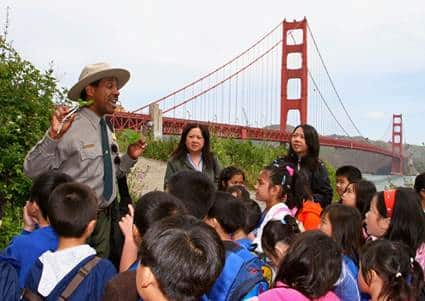We keep learning that facts and figures don’t change minds, and that to reach people on climate change, we need to tell them stories.This report from the conference hosted by the Institute at the Golden Gate looks at how we can utilize the wonder of nature to connect people to change.
WHY YOU SHOULD TAKE A LOOK
Most people have stories about how amazing nature is and how it made them feel more connected and inspired about environmental protection or their work on climate. And as much as I love a good-looking graph, it’s the stories of seeing amazing animals in the wild, or humungous trees or waterfalls that really get the heart pumping. This report, Parks: The New Climate Classroom, talks about how to do that in your work as a climate communicator.
KEY TAKEAWAYS
The Six Americas research still applies – aim to engage the middle of the pack who are convinced but not actively engaged on climate.
The less you say, the more you are heard – simplify, find a trusted voice as the messenger and then keep repeating (and repeating, and repeating).
Know your audience – who are you trying to engage? Have you thought about diversity in your engagement? Why not?
Think about other leaders – look around the table and ask ‘does this look like the next generation of environmental leadership?’
Teach with stories and lead with listening – relate to people’s concerns and possibly talk about asthma rather than air particles, or tomatoes rather than pesticides.
When telling stories, make your audience the hero – they can solve climate change! Monsters can be defeated and they are all the heroes on a quest to make a better world.
Communication needs three key things – motivation, ability, and a trigger to inspire action. If one of these is missing, it won’t work. If people are motivated about climate change, but don’t think they have the ability to do anything about it, they won’t act. Try and make sure your triggers to action are hot (immediate) and specific rather than cold (act in the future). Eg. Asking people to pick up three pieces of litter on the beach right now is hot and specific rather than asking them to ‘keep beaches clean’ or ‘reduce littering’.
Co-create with your stakeholders – test your engagement and be willing to change it from the tests. Make sure the barrier to entry is low and then follow up with the second ask. Ask for positive behavior change, rather than negative (stop doing this).
Co-create with different departments – the silos are dead. Scientists, artists, educators and technologists all working together is the new norm.
image: National Parks Service


